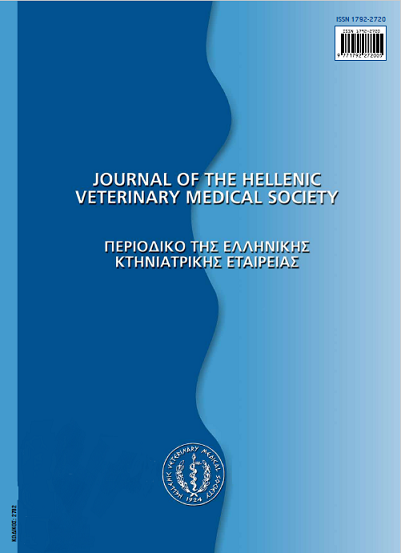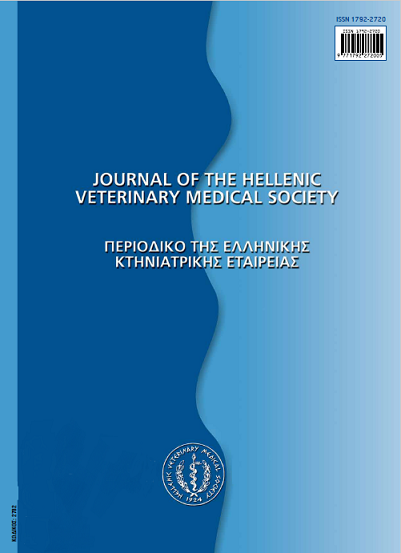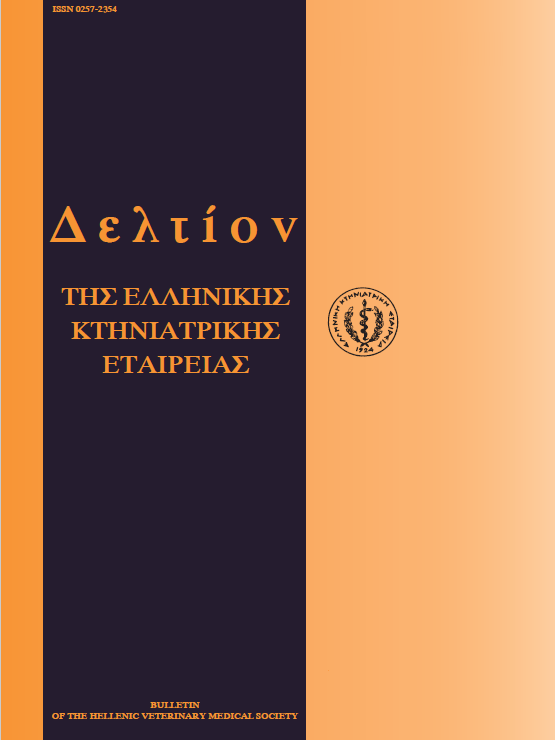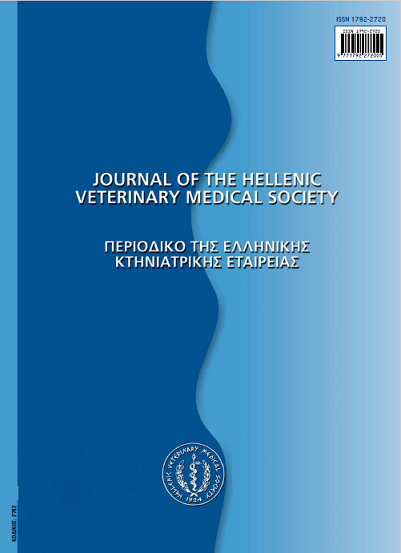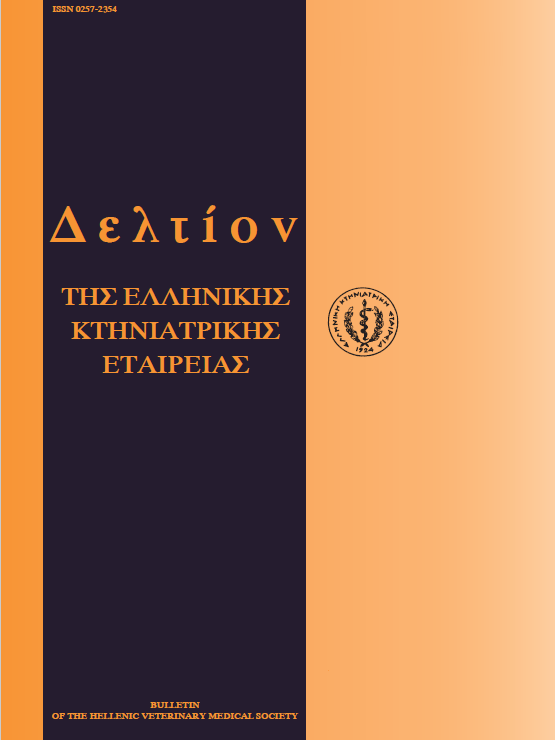Aujeszky's Disease (Pseudorabies). An old threat in current pig industry? Part II. Epidemiology, Immunity, Prevention and the current situation in Greece
Abstract
Aujeszky's disease (AD) (or Pseudorabies) is an important viral disease of swine causing neurological signs in neonatal pigs, respiratory problems in fatteners and reproductive disorders in breeding stock. Swine is the only natural host of Aujeszky's disease virus (ADV) and the only species that can survive its infection. Its transmission is mainly through nose-to-nose contact, but several other ways may apply. Both antibody- and cell-mediated immune responses occur following ADV infection, while maternal immunity can protect the pigs depending on their level and the virulence of the infecting strain. Virus glycoproteins may, also, play a role in immunity with that of gC and gD being the most important. Prevention and control of ADV is based on proper vaccination and biosecurity measures, while eradication has been practiced in various ways depending on the situation. The current vaccines are based on deletion of certain proteins and are effective. Despite the fact that the disease has been eradicatedfrom many developed countries, AD is still endemic in Greece. Findings of recent emergence of AD in Greek farms and the possibility of its eradication are discussed.
Article Details
- Come citare
-
PAPAGEORGIOU (Κ.Β. ΠΑΠΑΓΕΩΡΓΙΟΥ) K. V., BURRIEL, A. R., FILIOUSSIS (Γ. ΦΙΛΙΟΥΣΗΣ) G., CHRISTODOULOPOULOS (Γ. ΧΡΙΣΤΟΔΟΥΛΟΠΟΥΛΟΣ) G., NAUWYNCK, H. J., & KRITAS (Σ.Κ. ΚΡΗΤΑΣ) S. K. (2017). Aujeszky’s Disease (Pseudorabies). An old threat in current pig industry? Part II. Epidemiology, Immunity, Prevention and the current situation in Greece. Journal of the Hellenic Veterinary Medical Society, 62(2), 125–131. https://doi.org/10.12681/jhvms.14841
- Fascicolo
- V. 62 N. 2 (2011)
- Sezione
- Review Articles
Authors who publish with this journal agree to the following terms:
· Authors retain copyright and grant the journal right of first publication with the work simultaneously licensed under a Creative Commons Attribution Non-Commercial License that allows others to share the work with an acknowledgement of the work's authorship and initial publication in this journal.
· Authors are able to enter into separate, additional contractual arrangements for the non-exclusive distribution of the journal's published version of the work (e.g. post it to an institutional repository or publish it in a book), with an acknowledgement of its initial publication in this journal.
· Authors are permitted and encouraged to post their work online (preferably in institutional repositories or on their website) prior to and during the submission process, as it can lead to productive exchanges, as well as earlier and greater citation of published work.

